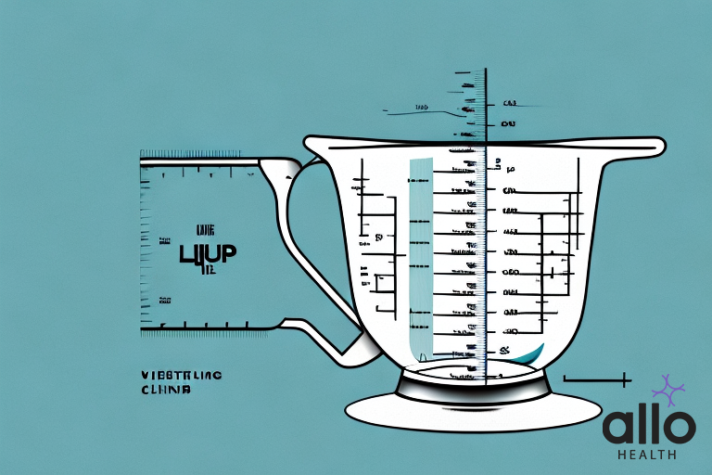What Is the Average Ejaculation Volume?

Allo Health is dedicated to personalized well-being, offering support and trusted information tailored to individual health goals. The platform emphasizes human-generated content, led by a distinguished medical team of experts, including physicians and sexual health specialists. Their commitment to credibility involves rigorous fact-checking, authoritative research, and continuous updates to ensure accurate, up-to-date information. Allo Health's unique approach goes beyond conventional platforms, providing expert-led insights and a continuous commitment to excellence, with user feedback playing a crucial role in shaping the platform's authoritative voice.

Ms Rachel graduated with a MSc. in clinical psychology from CMR university, Bangalore. With close to two years of experience in the field of Child and Adolescent Psychology.
Why This Was Upated?
Our experts continually monitor the health and wellness space, and we update our articles when new information became available.
Updated on 07 June, 2024
- Article was updated as part of our commitment to diversity, equity, and inclusion.

"The following blog article provides general information and insights on various topics. However, it is important to note that the information presented is not intended as professional advice in any specific field or area. The content of this blog is for general educational and informational purposes only.
Book consultation
The content should not be interpreted as endorsement, recommendation, or guarantee of any product, service, or information mentioned. Readers are solely responsible for the decisions and actions they take based on the information provided in this blog. It is essential to exercise individual judgment, critical thinking, and personal responsibility when applying or implementing any information or suggestions discussed in the blog."
Ejaculation volume is a topic that has been studied by medical researchers for decades. It is of interest to many people – both men and women – for various reasons. Men want to know if their average ejaculation volume is normal or if there are ways to increase it. Women want to know what to expect from their partner’s ejaculate volume. In this article, we will explore everything you need to know about ejaculation volume. Grab a cup of coffee and get comfortable – this might take a while.
What Is Ejaculation Volume?

Ejaculation volume refers to the amount of semen released from the penis during ejaculation. Semen is a combination of seminal fluid and sperm cells. It plays a vital role in sexual reproduction as it contains the sperm necessary for fertilization.
The volume of ejaculate can vary among individuals and is influenced by several factors. The composition of ejaculate includes fluids from the prostate gland, seminal vesicles, and bulbourethral glands. Seminal fluid provides a nourishing and protective environment for sperm, enabling their survival and movement. It also helps facilitate the transport of sperm through the reproductive tract during ejaculation.
In addition to seminal fluid, the ejaculate contains sperm cells. Sperm concentration, or the number of sperm cells per milliliter of semen, is an important aspect of ejaculation volume. A healthy sperm count is crucial for fertility, as it affects the chances of successful fertilization.
Factors Influencing Ejaculation Volume
Several factors can influence ejaculation volume in men. These factors include:
Seminal Fluid Production: Seminal fluid is produced by the prostate gland, seminal vesicles, and bulbourethral glands. The volume of these fluids contributes significantly to the overall ejaculation volume. Any issues or abnormalities in the production of seminal fluid can affect the volume.
Sperm Concentration: Sperm concentration refers to the number of sperm cells present in a given volume of semen. While the main focus is often on the sperm count for fertility assessment, the concentration of sperm cells also contributes to the overall volume of ejaculate.
Prostate Gland Health: The prostate gland plays a crucial role in semen production. Any conditions that affect the prostate, such as inflammation or enlargement, can impact the production and composition of seminal fluid, thus influencing ejaculation volume.
Sexual Stimulation: The level of sexual arousal and stimulation directly affects ejaculation volume. The intensity and duration of sexual activity can influence the amount of semen produced during ejaculation. Increased arousal and prolonged sexual activity tend to result in larger volumes of ejaculate.
Frequency of Ejaculation: The frequency at which a man ejaculates can affect the volume of subsequent ejaculations. Frequent ejaculation may lead to lower volumes due to the shorter recovery time for seminal fluid production. Conversely, longer periods of abstinence may result in larger volumes.
Health Issues: Various health conditions can impact ejaculation volume. For example, certain medications, hormonal imbalances, infections, and underlying diseases can affect the functioning of the reproductive system and the production of seminal fluid.
Lifestyle Factors: Lifestyle choices, such as smoking, excessive alcohol consumption, and illicit drug use, can have a negative impact on ejaculation volume. Maintaining a healthy lifestyle, including regular exercise and a balanced diet, can support optimal sexual health.
It’s important to note that individual variations exist, and not all men will have the same ejaculation volume. While there is an average range, it’s essential to focus on overall reproductive health, including sperm count, motility, and other semen parameters, rather than solely relying on ejaculation volume as a measure of fertility.
How to Measure Ejaculation Volume Accurately
Ejaculation volume is usually measured by collecting the semen inside a cup or a specimen container. The volume is then determined by measuring the amount of liquid in milliliters (ml). It is important to note that the volume of semen and the volume of ejaculate are not the same thing. Ejaculate includes more than just semen – it also contains fluids from the prostate, seminal vesicles, and bulbourethral gland. The average volume of ejaculate ranges between 1.5-5 ml, but the actual amount can vary greatly from person to person.
Ejaculation Volume and Fertility
Ejaculation volume is closely linked to male fertility. The environment for sperm within the ejaculate is crucial for their survival and movement. The presence of a healthy sperm count and motility significantly increases the chances of successful fertilization.
Intracytoplasmic sperm injection (ICSI) is a medical technique used to treat male infertility. It involves injecting a single sperm directly into an egg. The success of ICSI depends on the quality and quantity of sperm available for injection. Therefore, understanding ejaculation volume is essential when evaluating fertility potential.
Studies have shown that low-volume ejaculate can be associated with sexual dysfunction, including ejaculatory dysfunction and erectile dysfunction. These conditions may affect the ability to achieve or maintain an erection, leading to reduced ejaculation volume.
The Psychological Effects of Low Ejaculation Volume

Low ejaculation volume can have psychological effects on individuals, primarily due to concerns about sexual performance, fertility, and self-esteem. Here are some of the psychological effects that may arise from experiencing low ejaculation volume:
Performance Anxiety: Men with low ejaculation volume may develop performance anxiety, fearing that they are not satisfying their partner or living up to societal expectations. This anxiety can create stress and interfere with sexual enjoyment, leading to a negative impact on overall sexual well-being.
Self-esteem and Confidence Issues: Low ejaculation volume can potentially lead to self-esteem and confidence issues. Men may feel inadequate or less masculine if they perceive their ejaculatory function as below average. These negative self-perceptions can affect their overall self-image and impact their relationships.
Fertility Concerns: Men who desire to father children may experience significant psychological distress if they believe that their low ejaculation volume affects their fertility. Fertility concerns can lead to anxiety, frustration, and a sense of loss, especially if they are actively trying to conceive.
Body Image and Masculinity: Low ejaculation volume can sometimes be associated with a perceived lack of virility and masculinity. Men may compare themselves to societal expectations and stereotypes, causing them to question their sexual adequacy and masculinity. This can have a negative impact on body image and overall self-confidence.
Relationship Strain: In intimate relationships, low ejaculation volume can create tension and strain. Partners may have concerns about sexual satisfaction, fertility, or perceive it as a reflection of their desirability. Open communication and understanding between partners are crucial to address these concerns and maintain a healthy sexual relationship.
Psychological Distress: The psychological effects of low ejaculation volume can lead to distress, anxiety, and even depression in some individuals. The constant worry, self-doubt, and negative thoughts associated with low ejaculation volume can significantly impact mental well-being and overall quality of life.
It’s important to note that the psychological effects of low ejaculation volume can vary from person to person. Some individuals may be more resilient and able to cope effectively, while others may require professional support, such as counseling or therapy, to address their concerns and improve their mental well-being.
Are There Any Risks Associated with High Ejaculation Volume?
While high ejaculation volume is generally not considered a health risk, there are a few factors to consider regarding the potential risks or implications of unusually high ejaculation volume. These factors include:
Dehydration: A higher volume of ejaculate may result in increased fluid loss during ejaculation. In some cases, this can lead to temporary dehydration, especially if an individual frequently ejaculates without replenishing their fluids adequately. Staying hydrated is essential to maintain overall health and well-being.
Nutrient Loss: Ejaculate contains various nutrients and minerals necessary for sperm health. With higher ejaculation volume, there may be a higher loss of these nutrients. While the body can typically replenish these nutrients through a healthy diet, individuals with unusually high ejaculation volume may need to pay extra attention to their nutritional intake to ensure adequate replenishment.
Impact on Fertility Assessment: In certain situations, such as fertility evaluations or semen analysis, excessively high ejaculation volume can dilute the concentration of sperm cells in the semen. This can make it more challenging to accurately assess sperm count and other semen parameters, potentially affecting fertility evaluation results.
Sexual Function Concerns: In some cases, individuals with very high ejaculation volume may experience concerns related to sexual function. For example, if ejaculation volume is excessively high, it may result in a prolonged refractory period, the time it takes for a person to achieve another erection and orgasm after ejaculation. This can lead to sexual dissatisfaction or challenges in sexual performance.
Psychological Impact: While not a direct physical risk, individuals with unusually high ejaculation volume may experience psychological concerns similar to those associated with low ejaculation volume. These concerns can include performance anxiety, self-esteem issues, or relationship strain due to concerns about sexual satisfaction or fertility.
It’s important to note that the concept of “high” or “low” ejaculation volume is relative, and what is considered normal can vary among individuals. It’s essential to focus on overall sexual health, including semen parameters, sperm count, and other aspects of reproductive function, rather than solely fixating on volume.
The Average Ejaculation Volumes in Men Across Different Age Groups
The average ejaculation volume in men can vary depending on various factors, including age. While there is natural variability among individuals, here is a general overview of the average ejaculation volumes observed in different age groups:
Adolescence and Early Adulthood (Puberty to mid-20s)
During adolescence and early adulthood, the average ejaculation volume tends to be lower compared to later stages of adulthood. It usually ranges between 1.5 to 4 milliliters (about 0.3 to 0.8 teaspoons). This lower volume is primarily due to the immaturity of the reproductive system during this stage.
Mid-Adulthood (Late 20s to 40s)
In mid-adulthood, the average ejaculation volume typically increases. The range for this age group is usually between 2 to 5 milliliters (about 0.4 to 1 teaspoon). As the reproductive system matures and reaches its peak functionality, the volume of ejaculate tends to increase.
Late Adulthood (50s and beyond)
In late adulthood, there may be a gradual decrease in average ejaculation volume. However, it’s important to note that individual variations can be significant. The average range during this stage is around 1.5 to 4 milliliters (about 0.3 to 0.8 teaspoons), but some men may continue to have volumes within the mid-adulthood range.
It’s crucial to remember that these are average ranges and can vary among individuals. Factors such as overall health, lifestyle choices, frequency of sexual activity, and underlying medical conditions can influence ejaculation volume.
Frequently Answered Questions
Q. Can the frequency of ejaculation affect the volume?
A: Yes, the frequency of ejaculation can impact the volume of each ejaculation. If a man ejaculates frequently, the volume of each ejaculation may be lower. Conversely, if there is a longer period between ejaculations, the volume may be higher.
Q: Can age influence ejaculation volume?
A: Yes, age can influence ejaculation volume. It is common for the volume of ejaculate to decrease with age. Older men may experience lower semen volume due to changes in hormone levels, reduced sperm production, or changes in the prostate gland. However, individual experiences may vary.
Q: Does hydration level affect ejaculation volume?
A: Yes, hydration level can influence ejaculation volume. Staying adequately hydrated is important for overall bodily function, including semen production. Dehydration can potentially lead to a decrease in semen volume. It is recommended to maintain proper hydration for optimal sexual health.
Q: Can ejaculation volume be increased?
A: While there are no guaranteed methods to significantly increase ejaculation volume, certain lifestyle choices may help maintain or improve ejaculatory function. These include staying hydrated, adopting a healthy diet, managing stress levels, and avoiding unhealthy habits. However, it’s important to note that individual variations in ejaculation volume are normal, and any changes may not be substantial.
Q: Should I be concerned if my ejaculation volume is consistently low?
A: If your ejaculation volume is consistently low and you have concerns, it is advisable to consult with a healthcare professional. They can evaluate your overall health, assess any underlying issues, and provide appropriate guidance or treatment if necessary. It is important to remember that ejaculation volume can vary among individuals, and what is considered “normal” can differ from person to person.
Takeaway
Ejaculation volume is influenced by various factors, including seminal fluid, sperm concentration, prostate health, sexual stimulation, and lifestyle choices. Understanding the average range of ejaculation volume and its association with fertility is essential for individuals seeking to assess their reproductive health.
While there is natural variability in ejaculation volume among individuals, sudden changes in volume should be monitored and discussed with a healthcare professional. Maintaining a healthy lifestyle, managing underlying health issues, and seeking appropriate medical care when needed can contribute to optimal ejaculation volume and overall sexual well-being.
As research continues to advance in this field, further studies may shed light on additional factors that influence ejaculation volume and their implications. By staying informed and prioritizing sexual health, individuals can make informed decisions and take steps to support their reproductive function and overall quality of life.







































